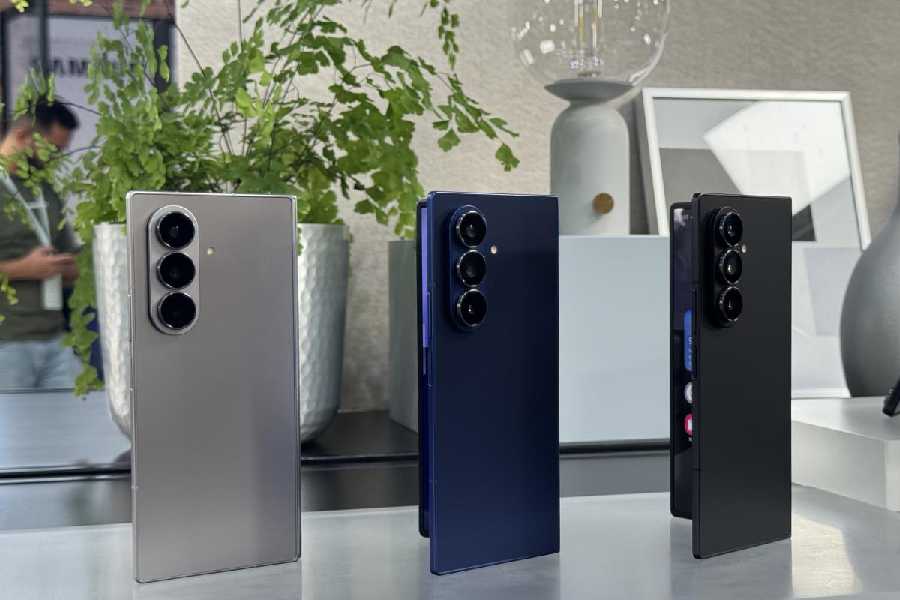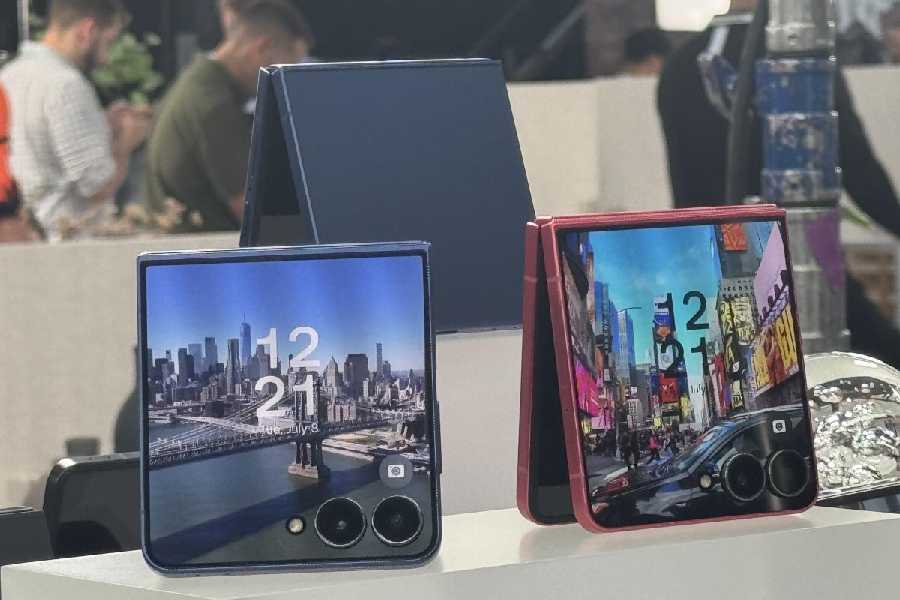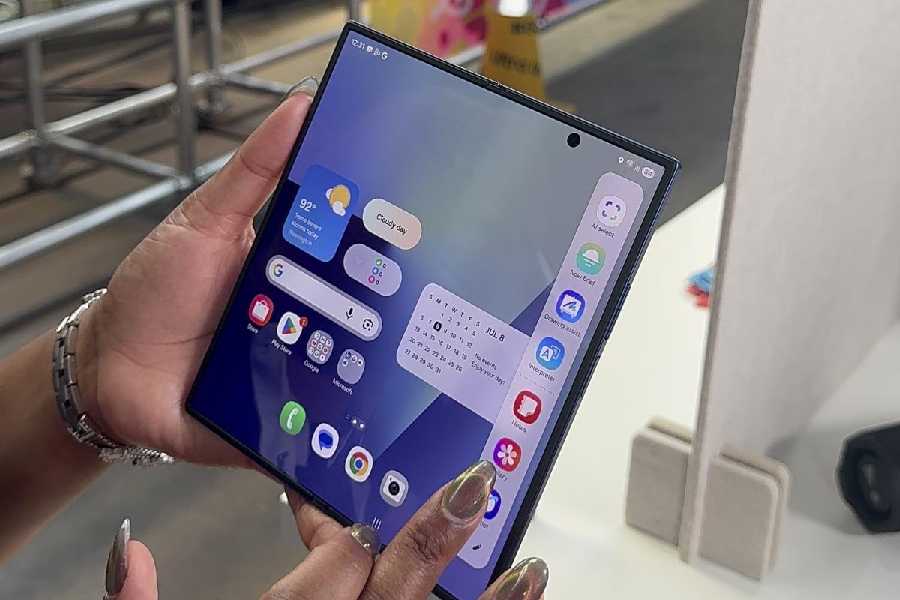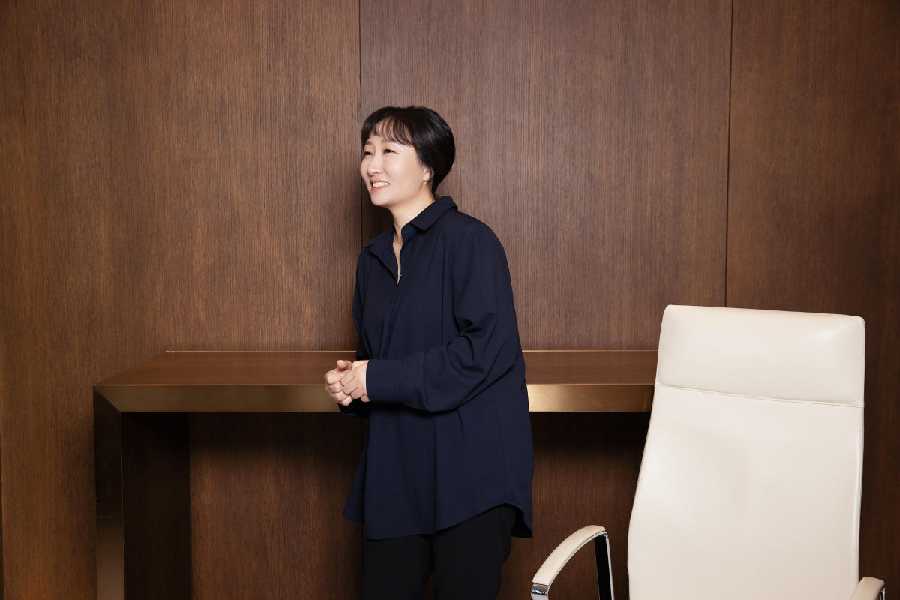Samsung’s summer Galaxy Unpacked event stole the spotlight with Galaxy Z Fold7 and Galaxy Z Flip7, which take the foldable phones game a few notches higher. It’s not just about getting phones that are slimmer and lighter. The updated processors enable a number of new software features, which are at the heart of the Galaxy Z experience. Both new devices come with One UI 8 and Android 16. Making the productive features on the Fold7 or Flip7 possible is the team led by Sally Hyesoon Jeong, executive vice-president, head of framework R&D, mobile experience business, Samsung Electronics. She fielded several queries after the Galaxy Unpacked event in New York.
One of the highlights of the new devices is how closely Samsung continues to work with Google. Many of the software features that Samsung Galaxy phones have presented over the years have become a part of the overall smartphone industry.
“Galaxy has always been about bringing new ideas to our customers, and we’ve introduced various new form factors and new ways to use them. So this isn’t just about hardware. We kept improving the software experience. Let’s go back to Galaxy Note II. We launched a multi-window (feature) on the phone. It gave people a new way to use a large screen, and it became a standard for the mobile industry. In 2019, we introduced our first foldable device with a new software that allows three-way multi-window and Flex Mode to match. We’ve always worked closely with Google,” said Jeong.
She leads the development team for S Pen, Multi-Tasking, Edge SDK, multiple Samsung services as well as Android platforms. Over the past 20 years, she has led the development of software based on various mobile platforms and contributed to the platforms. She is considered one of the most engaging, collaborative and adventurous leaders in the tech industry.

Samsung Galaxy Z Fold7 on display at the Galaxy Unpacked launch in New York.
Helping Android as a whole
The high level of software innovation at Samsung can be seen through something like DeX, which can allow a PC-like experience while using a smartphone. The company has been offering the feature for a long time on its bigger phones, but this year, DeX has come to Flip7. When the phone is connected to a monitor, it turns the Flip7 into a computer with its own desktop mode.
“DeX needs to support external monitors, and also USB-C needs to be supported. With Flip, we knew there were requests for the feature… there was demand for the feature. So for this launch, we discussed and worked together with Google and decided to support it on Flip,” she told t2.
It’s an example of how Samsung Galaxy phones are advancing the Android game. “It has been possible thanks to our long-standing partnership with Google. By introducing features on Galaxy first, we’ve been able to contribute towards creating a better experience for all Android users. A good example is Android 12L. This update brought more convenient features for larger screens, like taskbars and split-screen layouts in apps. This kind of collaboration doesn’t just benefit Galaxy users. It helps other Android makers and all users,” she said.
Given the number of form factors smartphones can take in the Android ecosystem, Jeong and her team are continuously working on software features, some of which are not hardware dependent.
“In cases where there is hardware dependency, we have to build the software experience… the whole experience together. For instance, in a large-screen environment, we would develop a software prototype, let’s say a deep prototype, for that large-screen application. But when there’s no dependency, we would develop the software on its own. For instance, we would try to identify some consumer pain points, or we do our AI development as well. We do research and evaluations on what kind of features to bring to our devices. So that kind of independent software development can take place,” said Jeong.

Galaxy Z Flip7 now supports the company’s DeX technology
One of the Galaxy One UI features that has become popular is the Now Bar, which shows live updates, and it is particularly helpful if you follow sports or take Uber or Lyft rides. Live details are always at your fingertips. The Now Bar, first shown on Galaxy S25, was built with Google.
Sure, Google has its foldable phones too, but when it comes to software, the two companies are peas in a pod. “Years ago, we were the first to introduce the foldable phone. And once we did that, we had to develop the software platforms to support the hardware innovation, and we continue to do so and we will continue to work with Google to expand the ecosystem.”
A policy of ‘openness’
A question that often comes up is why Samsung phones have all the Google features, including Gemini, when it also collaborates with Microsoft in other areas. The Satya Nadella-led company has something called Microsoft Copilot, which is taking competition to Gemini.
“We have a strategic cooperation with Google within the Android ecosystem. Gemini, for example, is closely integrated with apps like YouTube or Google Maps. We think is optimised for the mobile environment. That’s why we went with Gemini. But Galaxy AI pursues openness and, based on that philosophy, we continuously look at user needs and are always open to adopting what the user needs calls for,” said Jeong.
On the Fold7, multitasking is the biggest feature as you move from one app to another. The feature is also there on Samsung’s bar-style phones, but nothing beats the Fold. “With Fold, we see that the rate of using it for multitasking is much higher than on bar-type phones; this is something that our metrics show us. And so that’s why we continue to develop multi-window functionalities. Even on the cover screen, launching apps and using apps (are easy)… we provide possibilities,” she said while pointing to the versatile app Good Lock.
She also has her eyes on the future of smartphones, where voice assistants will play a far more important role. “Voice-centric UI is important. It is not about foldable… it is not a form factor issue. As AI develops, and we move more towards this kind of voice-centric UI and let’s say app-less UI, then whether it’s bar type or a foldable type phone, I think this is a possibility. Right now, for foldables, which have a larger screen, we have gone with the app interface, but as AI develops, and we receive more customer feedback, such options can be explored.”
Meanwhile, all eyes are also on the smartphones Samsung will be bringing after Fold7 and Flip7 because One UI 8 will soon be everywhere.
“We have various devices across many segments. We optimise for each segment. We have had the knowledge to do this for a long time. For One UI 8, we keep the core functions, but for each segment, we will optimise.”
Since Samsung has devices that cover different form factors, for example, foldable, tablets and bar-type phones, engineers need to think about how to optimise UI and applications for different screens.

When it comes to multitasking, Galaxy Z Fold7 has the display size as well as software chops to get things done
“When we developed and designed One UI 8, we looked at bar-type phones, foldables and tablets together. When we develop a feature for the bar-type, we see how to bring about continuity on the foldable and then on tablet. For large-screen applications, multi-window... all of these things need to be seen. Tablets, for instance, have a big lock screen, so how to express widgets on that display or whether we want to or not, these considerations are made. It’s all done together,” she said.
At the same time, the team needs to think of what features to deploy in the coming years. Before AI became an important element, companies thought of hardware development in terms of three- or five-year roadmaps. Now, AI features need to be factored in so that hardware supports them.
“Usually, for hardware design and development, we look at something like three years. That’s how we would think of what IPs to reflect in the AP and so forth. Right now, on-device AI is important with regard to this development trajectory. So, NPU enhancement is necessary. That’s a focus. We are working with a lot of AP design companies right now, working with them to cooperate in this field,” said Jeong.
No wonder Samsung is offering seven years of OS updates and security patches. “We know that the phones can be used for longer periods. So we believe that continuous software updates should match that.”
Mathures Paul











